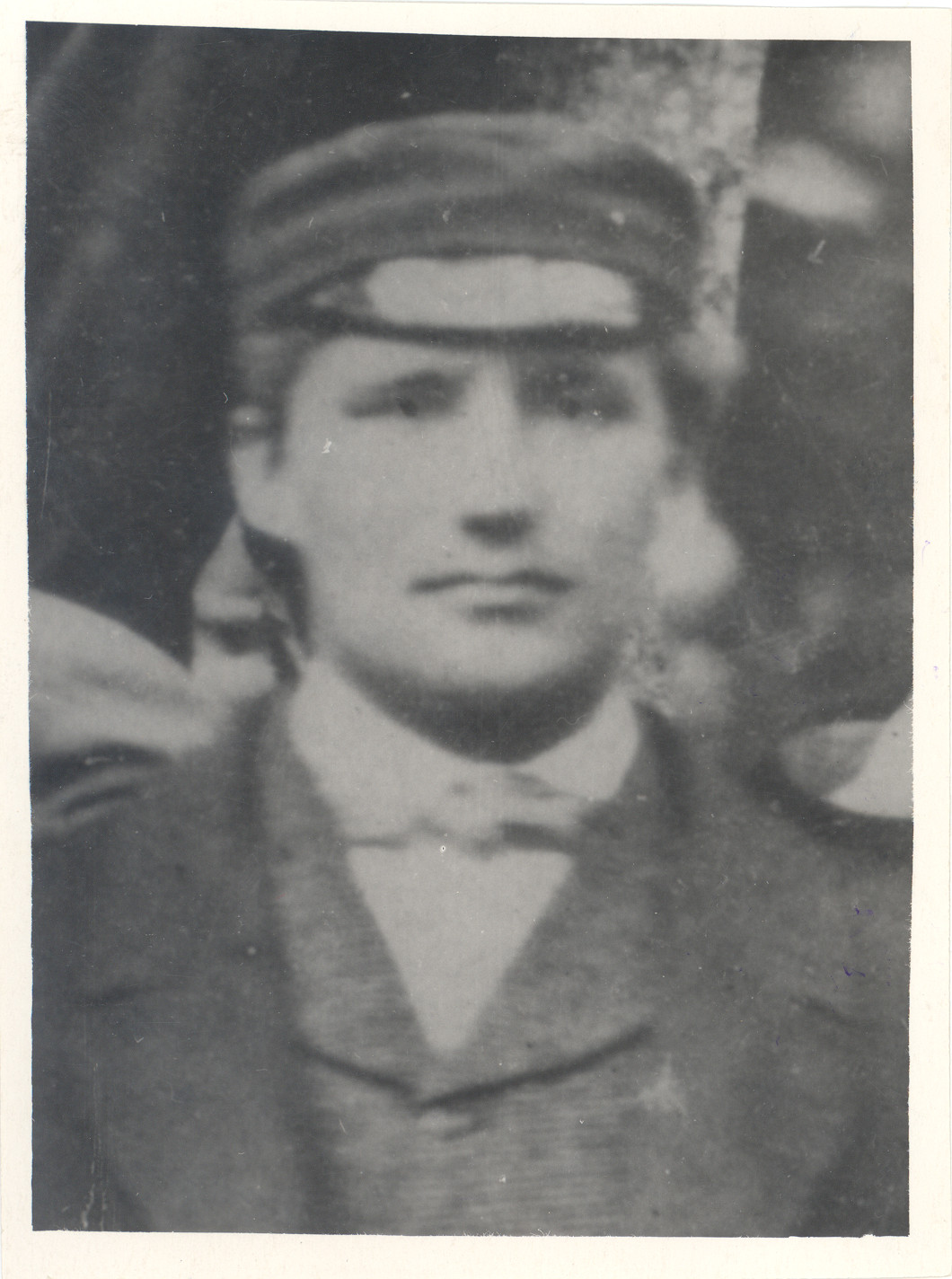
Jakob Pärn
Jakob Pärn (30./18. X 1843 – 6. X / 23. IX 1916) was an Estonian prose writer during the Age of National Awakening. In his stories, he promoted the ideas of Estonians being the masters of their land and their striving towards wealth and equality to the Germans.
Pärn was born in Lahvardi farm, Torma village, Tartu county to a tenant farmer’s family. He studied at Torma parish school where he met C. R. Jakobson, his junior by a few years and the later key figure of the Age of Awakening. Pärn befriended Jakobson and was influenced by him till Jakobson’s death in 1882. From 1862-1865, he studied at Oheim German-language private primary school in Tartu and from 1871-1882, at Tartu I Teachers’ Seminary. From 1869-1871, he was schoolmaster at the German primary school in Põltsamaa and from 1871-1882, he was the principal of another German primary school in Lihula. Due to his social and literary actions he clashed with the local German and wannabe-German (they were called ‘juniper Germans’ by fellow Estonians) elite and was forced to resign his position at the school. In 1883, with the help of a recommendation from Jakob Hurt, he became the principal of a parish school in Vana-Otepää village, where he worked for 25 years while also being socially active. As an advocate for the national movement, he originally favored the ideas of C. J. Jakobson, but later became to support Jakob Hurt. From 1908-1916, he worked as a teacher in several Valmiera (nowadays in Latvia) schools. He died in Elva and is buried at Raadi cemetery.
He started writing when he was studying at the Tartu Teachers’ Seminary. He initially wrote books and articles on housekeeping, parenting, healthcare, beekeeping, writing school assignments, etc. He also published several educational children’s books. His most prolific time was in the 1870s when he lived in Lihula. Altogether he wrote about two dozen stories, which were rather popular. In his works, he expressed the aspirations of Estonian men during the Age of Awakening while also offering useful teachings. The main aspiration of the time was owning land, i.e. purchasing a farm in perpetuity, which became possible for Estonians after the changes in peasant laws in Livonia in 1849 and in Estonia in 1856. Pärn’s most influential work was his novel Oma tuba, oma luba ehk Lahwardi Kristjani ja metsawahi Leenu armastuse lugu (‘My House, My Rules, or the Love Story of Lahwardi Kristjan and Leenu, the Forest Guard’s Daughter’, 1879), which was inspired by the fate of Pärn’s parents. The proverb ‘my house, my rules’ is a common saying even these days, expressing the typically Estonian attitude about property. Oma tuba, oma luba was one of the first Estonian literary works to be translated into Finnish (1882).
His popular story Must kuub (‘Black Coat’, 1883) described the development of Estonian farmers into estate owners. Economic emancipation offered Estonian men the possibility to marry a German, even a high-born girl – as it is depicted in Juhan ja Adele (‘Juhan and Adele’, 1879), one of the most popular stories by Pärn at the time. However, in Must kuub that was published four years later, the Estonian estate owner decides to marry an Estonian girl over a German one. In reality, the chances of fulfilling these Awakening-era dreams were close to none for most farm owners, as most still faced poverty and uncertainty. The stories Wilhelm (1878), Uni ei anna uuta kuube, magamine maani särki (‘Dreaming Will Not Grant a New Coat nor Sleeping a Long Shirt’, 1879) Lahtine aken (‘Open Window’, 1882) and Head sõbrad (‘Good Friends’, 1883) describe the development of Estonians’ feelings of ownership in the urban setting, offering hope that Estonians may become wealthy as merchants or craftsmen as well.
Many of Jakob Pärn’s works still remain as manuscripts, for example the stories Kasulapsed (‘Foster Children’) and Hinge maa! (‘Land of the Soul!’) that depict the hard life of farmers, but also the memoir Jutustus C. R. Jakobsoni ja J. Pärni elu loost (‘A Telling of the Life Story of C. R. Jakobson and J. Pärn’).
S. V. (Translated by A. S.)
Books in Estonian
Stories and novellas
Pere tüttar ja waene laps. Tartu: H. Laakmann, 1872, 58 lk.
Räbala-Hans ja Serwa-Aadu ehk Kuida töö nönda palk. Kuida sina lastele, nönda nemad pärast sinule ja weel mõned lühikesed õpetused. Wana ja noorele pääwa raskuse jahutuseks. Tartu: H. Laakmann, 1873, 80 lk.
Mis inimene külvab, seda tema ka lõikab!. Eesti Kirjameeste Seltsi Aastaraamat, 1873.
Wanaema warandus. Noore ja wanale päewa raskuse jahutuseks. Tartu: H. Laakmann, 1875, 90 lk.
Wilhelm. Wana ja noorele pääwa raskuse jahutuseks. Tartu: H. Laakmann, 1878, 90 lk.
Oma tuba, oma luba ehk Lahwardi Kristjani ja metsawahi Leenu armastuse lugu. Tartu: Schnakenburg, 1879, 47 lk. [Järgnevad trükid: 1911, 1923, 1926, 1979, 2009. E-raamat: 2014. Kättesaadav: http://hdl.handle.net/10062/8597.]
Juhan ja Adele ehk Armastus ei küsi seisuse järele. Tartu: Schnakenburg, 1879, 55 lk. [2. trükk: 1892. Kättesaadav: http://kivike.kirmus.ee/meta/AR-18347-45916-04833.]
Uni ei anna uuta kuube, magamine maani särki. – Sakala Lisaleht, 1879.
Üksainus tütar. – Sakala Lisaleht, 1879-1880.
Lahtine aken. Jutt Eesti käsitööliste elust. Tartu: Schnakenburg, 1882, 111 lk. [2. trükk: 1882.]
Head söbrad. Nowella linna rahwa elust. Tallinn: K. Busch, 1883, 72 lk.
Must kuub. Eesti rahva elust. Tallinn: T. Jakobson, 1883, 113 lk. [Järgnevad trükid: 1913, 1923, 1979, 2009. Kättesaadav: http://krzwlive.kirmus.ee/.]
Jumala abiga Omast jõuust. Eestirahwa elust J. Pärn. Tartu: Schnakenburg, 1884, 90 lk.
Children’s stories
Muistena juttud noore rahwale. Tartu: H. Laakmann, 1871, 40 lk.
Lühikesed juttud armsa lastele. Tartu: H. Laakmann, 1873, 43 lk.
Vanad jutud. Eesti Kirjameeste Seltsi Aastaraamat, 1875.
24 Juttu lastele. Tallinn: T. Jakobson, 1883, 42 lk. [E-raamat: 2014.]
Handbooks
Mõistlik majapidaja ja lastekaswataja: Üks nõuandmise raamat peremeestele, perenaestele, koolmeistritele ja kes weel seks saada soowiwad. Tartu: W. Gläser, 1869, 112 lk. [2. trükk: 1878.]
Kirjalikud tööd koolis ja kodu. Tartu: Schnakenburg, 1879, 56 lk.



